Romney Marsh Countryside Partnership
Planting for Insects & Drought
Feeding Stations For Bumble Bees And Other Insects
Although a good range of native plants is essential for establishing a healthy wildlife community you don’t have to overlook cottage garden plants. As well as bringing a boost in colour to our gardens at times of the year when our native flora is not always at its best, many are also excellent nectar and pollen providers for insects such as bees and butterflies.
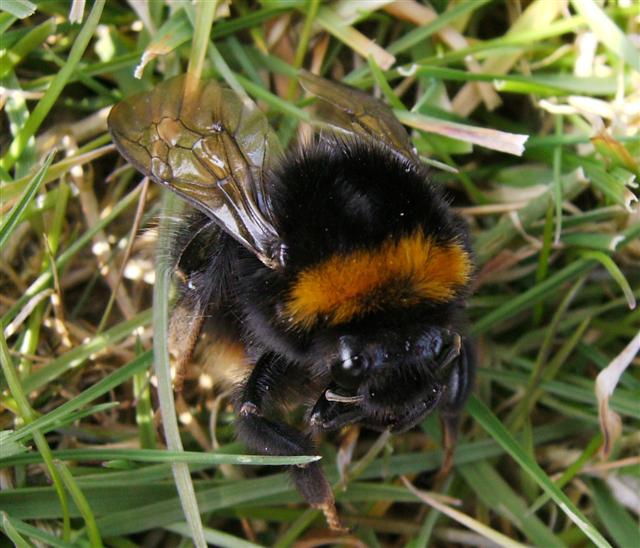
Listed below are a small selection of cottage flowers which are well known for attracting insects into the garden.
By observing flowers in other people’s gardens you will soon be able to add to the list.
Generally speaking, biennial or perennial flowers that flower from year to year are better for insects than annual bedding and will blend seamlessly with native wildflowers if planted in a cottage style border. However, do avoid any highly bred varieties with double flowers, many of which are sterile and so no longer produce pollen, nectar or even seed!
Don’t be in too much of a rush to tidy up the borders at the end of the summer. Many perennials produce good seed crops for birds such as goldfinches and places for insects, such as ladybirds, to overwinter. As well as benefitting the wildlife you will also be able to admire the sculptural quality many seedheads bring to the garden when covered with winter frosts.
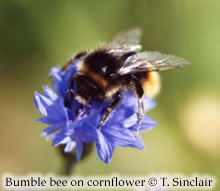
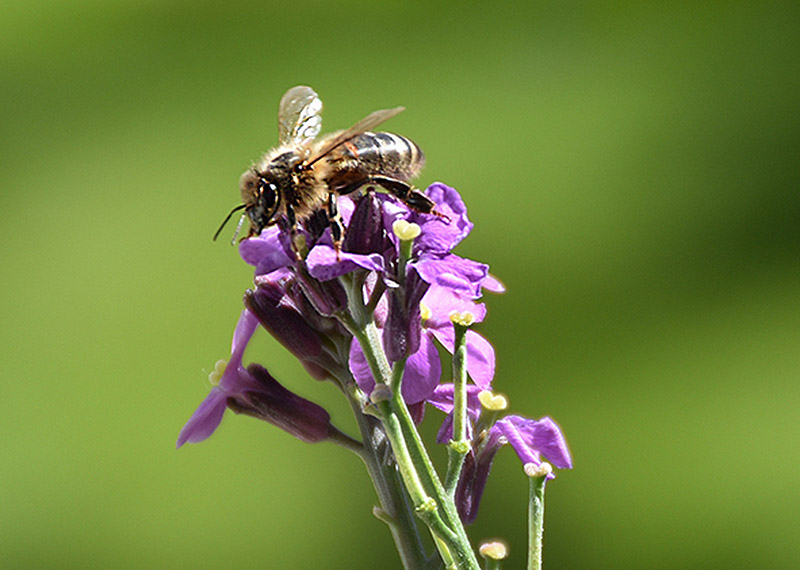
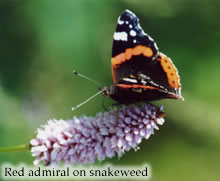
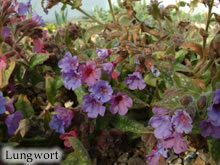
Early Spring
(important for
emerging bees)
Muscari botryoides (Grape hyacinth)
Pulmonaria saccharata (Lungwort)
Myosotis species (Forget-me-not)
Lunaria annua (Honesty)
Arabis albida (White arabis)
Late Spring to Mid Summer
Echinacea purpurea (Cone Flower)
Hesperis matronalis (Sweet Rocket)
Limnanthes douglasii (Poached Egg Plant)
Geranium spp (Cranesbills)
Oenothera biennis (Evening Primrose)
Achillea species (Yarrow)
Lavendula angustifolia (Lavender)
Monarda (Sweet Bergamont)
Hesperis matronalis (Sweet Rocket)
Nepeta species (Catmint)
Mentha species (Mint)
Polygonum bistorta (Snakeweed)
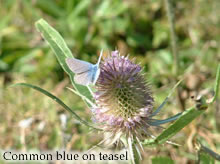
Late Summer
Solidago canadensis (Golden Rod)
Sedum Spectabile (Ice Plant)
Aster species (Michaelmas Daisy)
Echinops rita (Globe Thistle)
Phlox species (Phlox)
Rudbeckia species (Black eyed Susan)
Centranthus ruber (Valerian)
Helenium species (Helen’s flower)
Verbena bonariensis (Verbena)
Wildflowers for the border
Agrostemma githago (Corncockle)
Dipsacus fullonum (Teasel)
Linaria vulgaris (Toadflax)
Knautia arvensis (Field scabious)
Digitalis purpurea (Foxglove)
Origanum vulgare (Marjoram)
Armeria maritima (Thrift)
Malva sylvestris (Musk Mallow)
Centaurea scabiosa (Greater Knapweed)
Echium vulgare (Viper’s Bugloss)
Cornflower (Centaurea cyanus)
Leucanthemum vulgare (Ox-eye daisy)
Crambe maritima (Sea Kale)
Eupatorium cannabinum (Hemp-agrimony)
Dealing With Drought Conditions
Although it’s not always obvious, Shepway district is a relatively hot and dry region in terms of the British climate! Given current trends in climate change these drought conditions are likely to become even more pronounced in years to come. Many areas in Shepway also have very stony and free-draining soils. These factors combined certainly make for very challenging conditions if you happen to be a plant! Working with the existing conditions is always likely to be more fruitful than trying to fight nature. Not only will you have a more successful garden in the long run but you are also likely to save yourself money, time and a lot of hard work and waste from constant watering!
What makes local wildflowers successful? Do they have furry leaves to reduce moisture loss or fleshy leaves that conserve water? Why not try incorporating some of these natives into your own garden.
Please do not take plants from the wild
Combine native species with ornamental plants that have similar properties.
Avoid expensive annual bedding which has to be replaced each year. These plants require a rich soil to do well and considerable watering throughout the summer!
Many plants which originate from hotter regions are perfectly happy in our increasingly dry summer conditions and are able to withstand a surprising ammount of winter cold so long as their roots remain dry. When planting try to improve the winter drainage by adding grit or sharp sand to the planting hole.
Avoid the temptation to water lawns during periods of summer drought. Lawn sprinkers use an incredible ammount of water (up to 12 baths per hour!). By not using a sprinker the grasses will be encouraged to sink deepr roots into the soil making them more resilient to the drought conditions.
Conserve water by mulching flower beds with a suitable material in early spring. This is best done in March/early April just as perennial plants are starting to produce new growth. Cover with at least a 5cm layer best applied after rain when the ground is still moist. Only use a mulch from a renewable source such as well-rotted farmyard manure or home produced compost rather than extracted peat.
If watering is necessary use a watering can rather than a hose. If possible, try to collect your own rainwater in a convienently situated water butt rather than use tap water. Watering in the evening will help to avoid scorching sensitive leaves and ensures that the water reaches the roots rather than evaporating away.
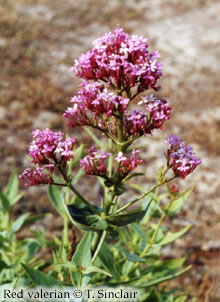
Drought tolerant plants for sunny borders
Dense planting will create a microclimate that helps to reduce water loss through evaporation and hence the need for regular watering. A dense carpet of planting also has the added benefit of reducing the need for weeding and gives a more natural look than meticuously tended bare soil.
Perennial Flowers
Achillea species (Yarrow)
Alcea rosea (Hollyhock)
Armeria maritima (Thrift)
Centaurea species (Knapweed)
Centranthus ruber (Valerian)
Digitalis purpurea (Foxglove)
Echinops rita (Globe Thistle)
Echium vulgare (Viper’s Bugloss)
Eryngium species (Sea Holly)
Euphorbia species (Spurge)
Lavendula angustifolia (English Lavender)
Nepeta species (Catmint)
Oenothera biensis (Evening Primrose)
Penstemon species (Penstemon)
Santolina species (Cotton Lavender)
Sedum spectabile (Ice Plant)
Stachys byzantina (Lambs’ Ears)
Verbena bonariensis (Verbena)
Shrubs
Buddleia species (Butterfly Bush)
Cistus species (Rock Rose)
Ceanothus species (Californian Lilac)
Lavatera species (Tree Mallow)
Senecio “Sunshine” (Senecio)
Rosmarinus officinalis (Rosemary)
Local Suppliers
Country Flowers Wildflower Nursery
62 Lower Sands
Dymchurch
Romney Marsh
Kent TN29 0NF
Tel: 01303 873052
The English Cottage Garden Nursery
2 Hurst Poultry Farm
Giggers Green Road
Aldington
Kent TN25 7BU
Tel/Fax: 01233 720907
www.englishplants.co.uk
